Now we're getting into me forgetting what each machine is, but all I know is that this has to keep things very cold. Currently, the temperature on this is negative 182.1 degrees C.
I couldn't help but show another one of these, a very large version of the first few I saw. There was another very expensive device that separates components with slow dripping motion but the pics were not good.
This is in one lab to show all of the ventilation systems built into the room but also the portable ventilation that you can take to your station if you need.
Even in the hanji lab, there are so many machines. These are dochim hammers. Easier than pounding paper with wooden mallets by hand, but not quite the same effect.
And then a single sheet former near the half-mechanized vat.
And a pulp freeness tester.
This dries paper. I don't think the hanji lab is included in this number, but the hardcore lab equipment in the many rooms I visited totals $5 million, and the building itself was also $5 million. The thought that once the next shift of researchers comes in (Korea always rotates their civil servants every two years, both nationally and abroad, say, at consulates), all of this could be scrapped for the next big project is mind boggling.
In the museum, Dr. Jo had created displays for bast fiber resources, which is very much the realm of paper.
As well as oil plant resources, and then
dye plant resources.
Samples from lacquer trees as well as actual lacquered cups. Lacquer is a whole other craft but it's incredible to think that it comes from trees, and can coat wooden and paper objects. Plants never cease to amaze and be practical. I'm re-reading Braiding Sweetgrass and keep being reminded of the great gift they are to us, as well as the best teachers, if we pay attention.
And more treasures in storage that Dr. Jo collected from 1991 onward, bamboo objects and wood relics.
After the whirlwind tour of the facilities, we finally got to sit down in Dr. Lee's shared office and he showed me a plant he picked up randomly that was outside, because he has now become so obsessed with bast fiber given his big hanji/dak projects. I tried to explain to him about lace bark and Steeve's research, but mostly was so happy to have another convert. Once you can see these things, it's hard to unsee them all around you.
This was the part where we looked at rare treasures contained in books and paper artifacts on loan from various places and one particularly generous professor who has amassed an insane collection of such items. Here, Dr. Lee is noting that the label of the book is written onto taeji: hanji made with inclusions of freshwater algae (Spirogyra). This was his last big project and he and Dr. Jo collected tae (the algae) so that Shin Hyun-se could make hanji with it. This was probably the first time very traditional hanji was made using the hanging bal, and you can tell on either side of the sheet by seeing the direction of the fibers going in one direction, and on the other side, in the perpendicular direction.
This is a Japanese book of collected samples of paper and pre-paper substrates from all over the world. Only 100 copies of this volume exist and it probably costs over $26,000.
Looking at samples of paper that have also been textured against carved wood, as many book covers were.
I can't read the Japanese captions so I can't tell you the exact origin of this but clearly it's from a palm leaf book.
These are Korean papers and you can see how the indigo has leached out onto the taeji sample opposite it (I think it's the lipids that have traveled out?).
And more treasures in storage that Dr. Jo collected from 1991 onward, bamboo objects and wood relics.
After the whirlwind tour of the facilities, we finally got to sit down in Dr. Lee's shared office and he showed me a plant he picked up randomly that was outside, because he has now become so obsessed with bast fiber given his big hanji/dak projects. I tried to explain to him about lace bark and Steeve's research, but mostly was so happy to have another convert. Once you can see these things, it's hard to unsee them all around you.
This was the part where we looked at rare treasures contained in books and paper artifacts on loan from various places and one particularly generous professor who has amassed an insane collection of such items. Here, Dr. Lee is noting that the label of the book is written onto taeji: hanji made with inclusions of freshwater algae (Spirogyra). This was his last big project and he and Dr. Jo collected tae (the algae) so that Shin Hyun-se could make hanji with it. This was probably the first time very traditional hanji was made using the hanging bal, and you can tell on either side of the sheet by seeing the direction of the fibers going in one direction, and on the other side, in the perpendicular direction.
This is a Japanese book of collected samples of paper and pre-paper substrates from all over the world. Only 100 copies of this volume exist and it probably costs over $26,000.
Looking at samples of paper that have also been textured against carved wood, as many book covers were.
I can't read the Japanese captions so I can't tell you the exact origin of this but clearly it's from a palm leaf book.
These are Korean papers and you can see how the indigo has leached out onto the taeji sample opposite it (I think it's the lipids that have traveled out?).
Indigo-dyed samples of paper from the 13th or 14th century; this is an accordion book.
14th century, from the Goryeo era. I begged Dr. Lee to just leave the sample in the folder because it looked fragile and I had already seen so many incredible examples. Again, paper conservators, look away!!
16th century samples.
I think this is printing with indigo (a lot of these are not right facing or right side up because I was across from Dr. Lee and Dr. Jo).
The front of this indigo-dyed piece is also textured against a wood block, you can see the pattern picking up in the light.
The front of this indigo-dyed piece is also textured against a wood block, you can see the pattern picking up in the light.
And the back side, with recycled papers.
This is particularly gorgeous taeji because it also includes a sparkly/pearly sheen from I don't know what but it was not stuff you buy at the store like you can now!
And a piece of Joseon-era hanji with inclusions of feathers.
I was told this was particularly rare, to find hanji with inclusions of the cambium layer of the pine tree.
This was wonderful to see, how paper bits were obviously recycled into this sheet. I do stuff like that all the time and it's nice to know it's a very normal human impulse.
We had spent so much time both outside and inside, so it was getting too dark to finish the tour of the additional grounds and bamboo research groves, but I asked what the big nest was, from the parking lot, as we planned for dinner. Dr. Lee said a magpie nest, those same birds I saw during my quarantine (and the only birds I saw that whole time).
The next afternoon (March 4) was when we were able to walk those grounds, despite the rain. By now I am terribly ill and did not have energy to take a lot of notes or photos.
I'm pretty sure that these are dak trees, related to the giant one (biggest dak tree in Jinju) that got moved from...
this corner in the city, where Dr. Jo had known it was living in between a wall and a building. The building was no longer in use, a school, and the forest science institute got involved so that they could not only do the moving but have the budget to do it (17 million won, over $15,000).
Though I really just wanted to flop onto the ground from being so sick, I still managed to give well wishes to the tree to take root and thrive in its new home. It was intentionally trimmed back so that it doesn't spend any energy on its leaves, only on getting its roots through the holes in the structure holding it, and the into the ground.
And a piece of Joseon-era hanji with inclusions of feathers.
I was told this was particularly rare, to find hanji with inclusions of the cambium layer of the pine tree.
This was wonderful to see, how paper bits were obviously recycled into this sheet. I do stuff like that all the time and it's nice to know it's a very normal human impulse.
We had spent so much time both outside and inside, so it was getting too dark to finish the tour of the additional grounds and bamboo research groves, but I asked what the big nest was, from the parking lot, as we planned for dinner. Dr. Lee said a magpie nest, those same birds I saw during my quarantine (and the only birds I saw that whole time).
The next afternoon (March 4) was when we were able to walk those grounds, despite the rain. By now I am terribly ill and did not have energy to take a lot of notes or photos.
I'm pretty sure that these are dak trees, related to the giant one (biggest dak tree in Jinju) that got moved from...
this corner in the city, where Dr. Jo had known it was living in between a wall and a building. The building was no longer in use, a school, and the forest science institute got involved so that they could not only do the moving but have the budget to do it (17 million won, over $15,000).
Though I really just wanted to flop onto the ground from being so sick, I still managed to give well wishes to the tree to take root and thrive in its new home. It was intentionally trimmed back so that it doesn't spend any energy on its leaves, only on getting its roots through the holes in the structure holding it, and the into the ground.





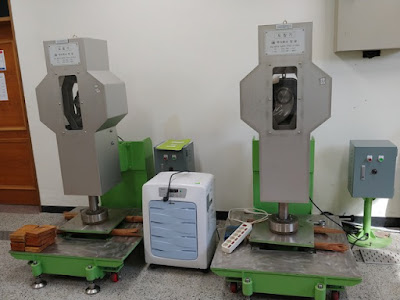


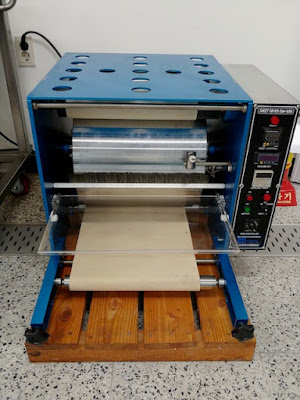



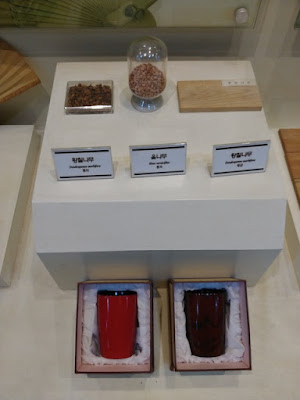





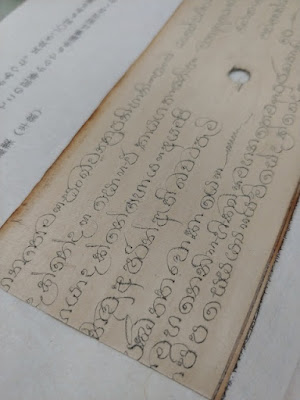

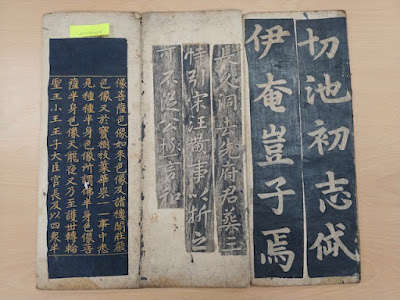







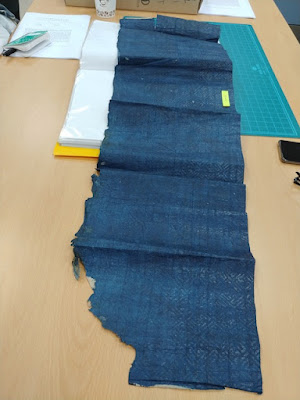

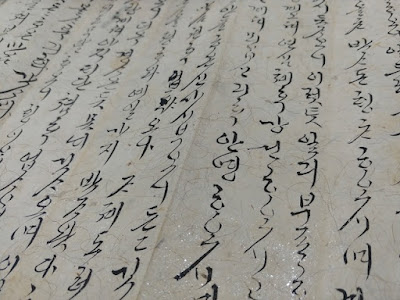



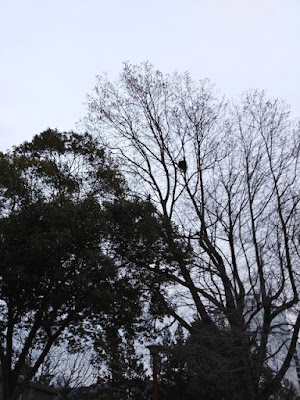

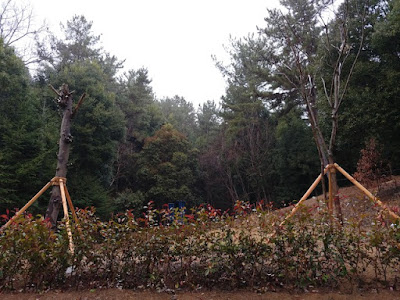


No comments:
Post a Comment